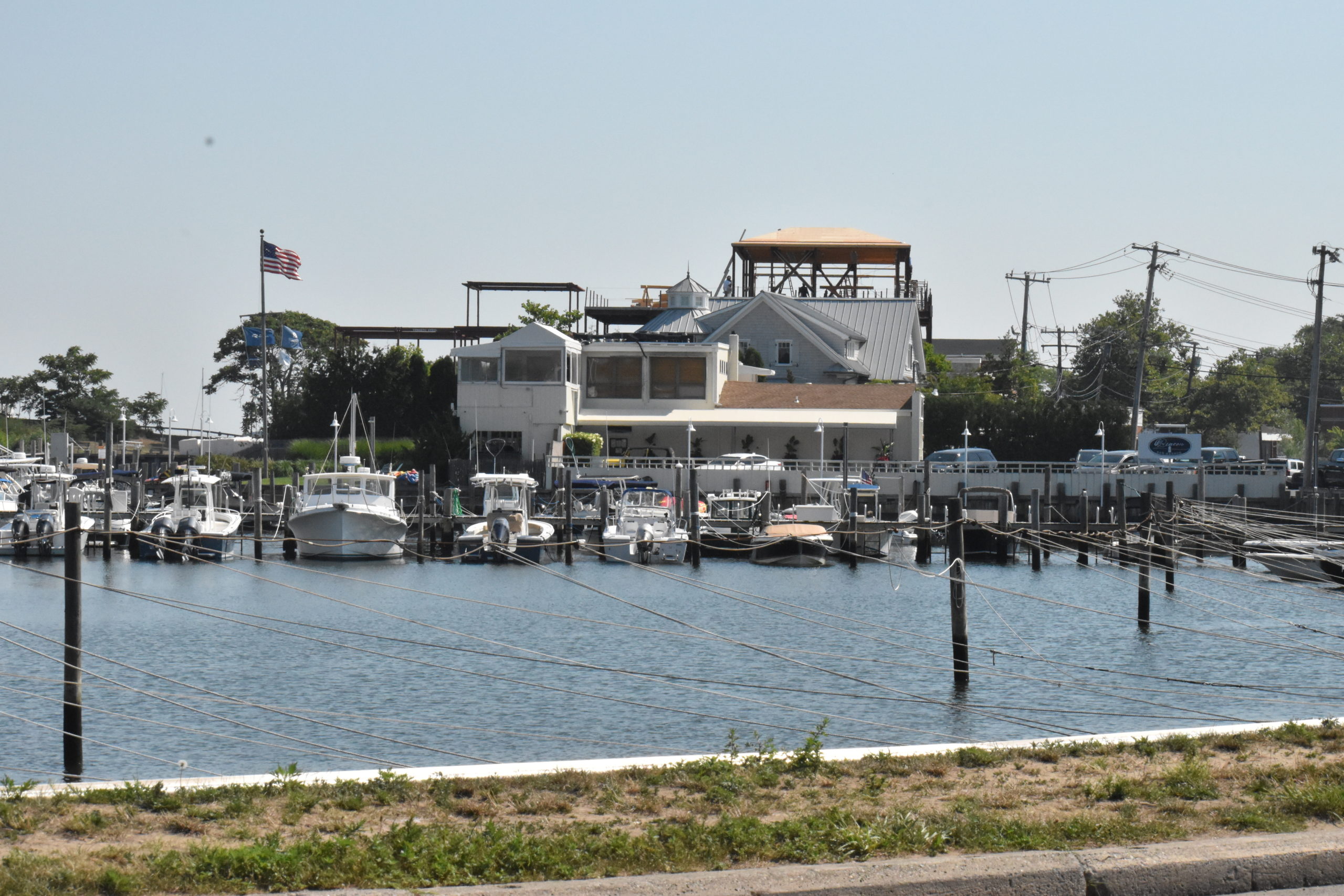
Amid calls for tighter restrictions on the size and height of buildings, the Sag Harbor Village Board on Tuesday, December 14, adjourned once again a hearing on a proposed waterfront overlay district.
Residents who want to weigh in on proposed zone changes that are designed to protect the character of the waterfront and public access to it will have another opportunity at the board’s January 11 meeting, when it is expected the hearing will be closed and a vote will be held on the new zoning rules.
Mayor Jim Larocca and Village Attorney Elizabeth Vail attempted to answer concerns raised by members of the public about specific changes that had been made to the original version of the overlay district that was proposed last year by former Mayor Kathleen Mulcahy.
One of those dealt with the allowable size of commercial buildings in a portion of the office district bounded by Long Island Avenue and Bridge, Rose, and Meadow streets. Hilary Loomis, the co-director of Save Sag Harbor, asked why a 2,000-square-foot limit on the size of retail buildings, included in the original proposal, had been dropped.
“There is a developer that we all know that is looking very actively and bought up a lot of property in the office district,” she said, referring to Adam Potter, chairman of Friends of Bay Street, who has bought or has ties to groups that have bought a number of parcels in the area. “Wouldn’t it be prudent to limit development of commercial space there?”
Vail said if the board wanted to adopt such a change to its code, it needed to be subjected to a planning study to avoid having it vulnerable to being overturned in court. She added that the size limit had been included in the original draft because that version of the law “proposed to actually expand and allow further retail uses in the office district.”
“We are not allowing retail into the office district,” she added. “Whatever is permitted there is what is allowed to continue.”
Ellen Dioguardi, the new president of the Sag Harbor Chamber of Commerce, pointed out that Dodds & Eder, a home furnishing store that closed last January, would be an example of a retail store that would be allowed to continue as a preexisting, nonconforming use.
The issue was important to chamber members, she added. “Understandably, the chamber membership has concerns about creating an unfair advantage for new businesses, especially considering there are strict size restrictions for Main Street business,” she read from a prepared statement.
Peter Ginna, another Save Sag Harbor board member, also spoke. He asked the board to consider reimposing a two-story height limit on buildings along the south side of Bay Street from the corner of Main Street to Rysam Street and the south side of Long Island Avenue from the corner of Main Street to the post office parking lot. The new draft would allow buildings on those lots to be three stories, or 35 feet tall, provided the third floor was set back 10 feet.
“We think that would be out of scale with the rest of the village,” he said, adding that they would be “the first thing a lot of people see if they come to Sag Harbor from the water. We think it would be unfortunate for those buildings to rise to that size.”
Randy Croxton, an architect and another Save Sag Harbor board member, urged the board to restore a requirement that owners of waterfront property provide access along the waterfront as part of a group of community benefits if they sought to build three-story buildings. Such a zoning requirement might not provide immediate dividends, but would in the long run, he said: “Once you have zoned it that way, over time that vision … may not be with us or our children, but certainly with our grandchildren or grandchildren.”
The new version of the code has made pedestrian access to the water’s edge discretionary, Croxton said. “It becomes conditional, so it has really been removed as a requirement.”
The new draft requires property owners to set aside 20 percent of their lots for open views to the water and requires those who want a third story to allow a 10-foot-wide pedestrian path to the water’s edge.
Mayor Jim Larocca, who had earlier warned speakers “we are not going to reopen this process yet again for nonessential matters,” appeared to grow frustrated, telling the audience that the board did not have the legal authority to require property owners to provide that type of access to the waterfront.
“I don’t know that we gain anything by coming back to that conversation over and over again,” Larocca said. “We do not agree as a matter of law, or a matter of history, that we have the access or the tools to take that property into the public domain.”
He added that most of the objections to the proposed code have come from members of Save Sag Harbor.
“The wider community that also communicates with us doesn’t come back over and over and over again, the same three or four people, with the same arguments we have tried in good faith to address,” he said, urging compromise so the board can complete the rezoning effort by the deadline at the end of February.